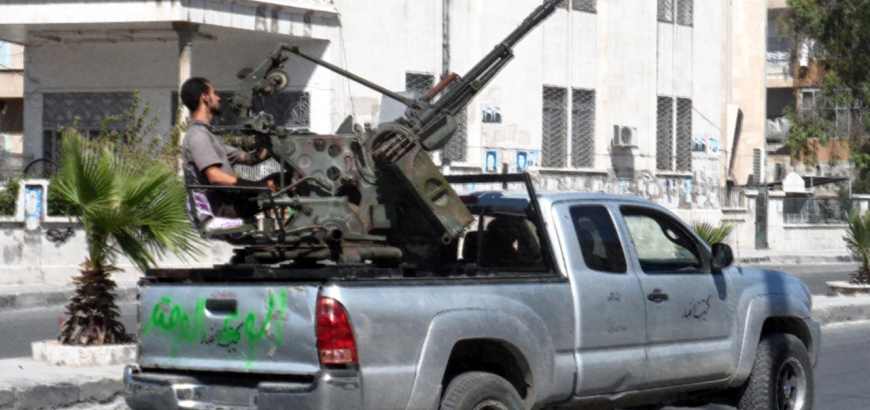Meetings for the fifth session of Astana negotiations around Syria began in the Kazakh capital on Tuesday with bilateral technical meetings between the delegations of guarantor countries Russia, Turkey and Iran, as well as other parties.
The Syrian opposition delegation reached the meetings' headquarters early and included a number of representatives of armed military groups, while Mohamad Alloush, the head of the delegation in previous negotiations, was noticeably absent.
The discussions began with a meeting between the Russian and the regime delegations and another meeting bringing together the United Nations envoy to Syria, Staffan de Mistura, and the Russian delegation in the Marriot hotel. Meanwhile, the opposition carried out meetings in the site where it was staying with the Turkish delegation.
The issue of establishing centers and forces to monitor the “de-escalation zones” which were agreed upon in the Astana 4 negotiations is among the most prominent matters discussed by those currently meeting in the Kazakh capital. The de-escalation zones include Idleb, Aleppo (northwest), Hamah (central), and parts of Lattakia (west). In this context, the Russia Today website reported that the discussion in the Astana talks revolved around establishing two centers to monitor the de-escalation zones, the first Jordanian-Russian-America and the second Turkish-Russian, adding, quoting its sources in Astana, that “one of the two centers will operate in Jordan and the other will be between Turkey and Syria.”
The site said that Russia and Turkey would be observing the north, Russian and Iran the center and just Russia the south, which appears to concur with Amman and Washington's requests to keep Iranian forces away from Syria’s southern border, where Jordan and the American forces are stationed to train Syrian opposition fighters in the battle against the Islamic State (ISIS).
The site said that an agreement had been reached and that the observation center would exchange information and withdraw forces if fire continued, adding that the time period for the de-escalation zones was three months, subject to extension. It noted that the closing document for the Astana 5 talks may not include all four de-escalation zones as the agreement on disputed areas may be concluded later.
The reason for this is that Iran objects to the southern zone which Russia and America are discussing, as it includes Quneitra, Daraa and Suweida. Russia Today reported that “the southern zone is still subject to discussion and dispute because of Iran’s rejection that this zone include Quneitra and the Suweida countryside.”
Iran’s rejection of this zone comes because of its current project to establish a land path from Iranian territory passing through Iraq and then Syria to the headquarters of the Lebanese militia Hezbollah, a plan Syrian opposition groups are currently trying to derail by entering into battles in Daraa and the Syrian desert. As such, to include wide areas of southern Syria in the de-escalation zones would make the task difficult for Iran.
This article was translated and edited by The Syrian Observer. Responsibility for the information and views set out in this article lies entirely with the author.


